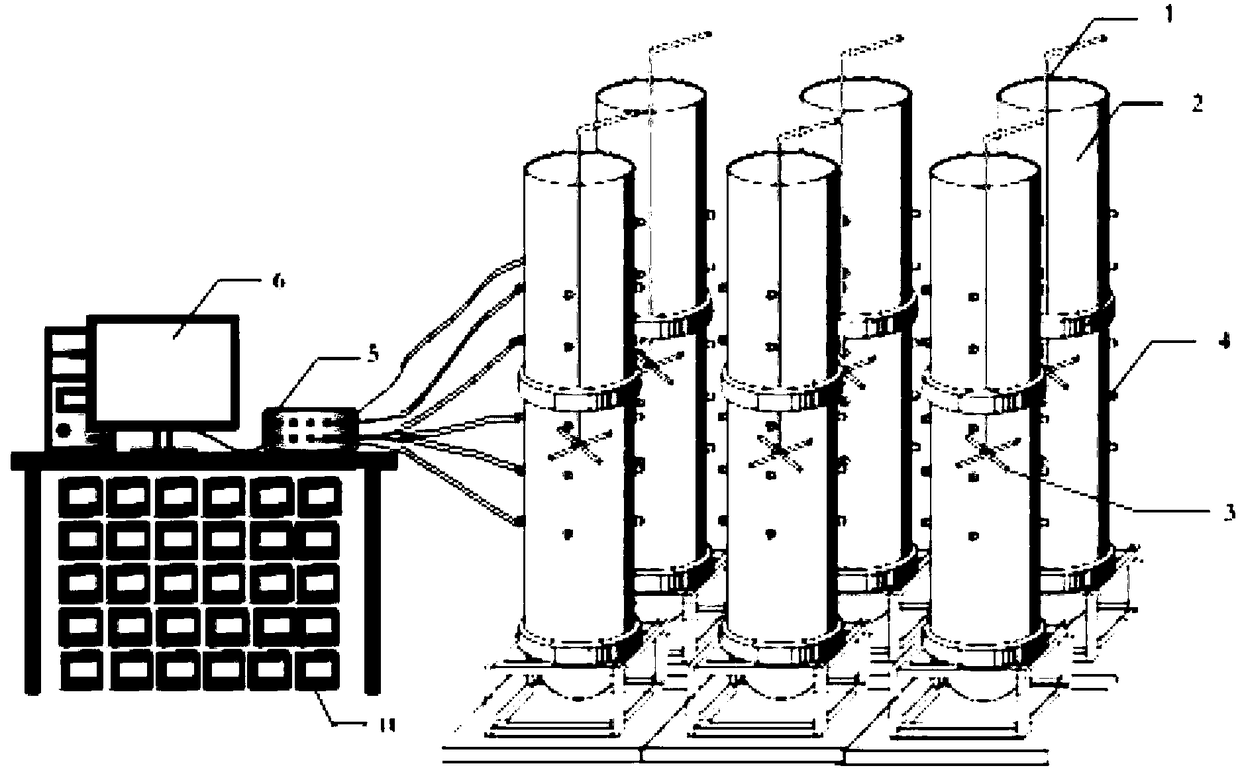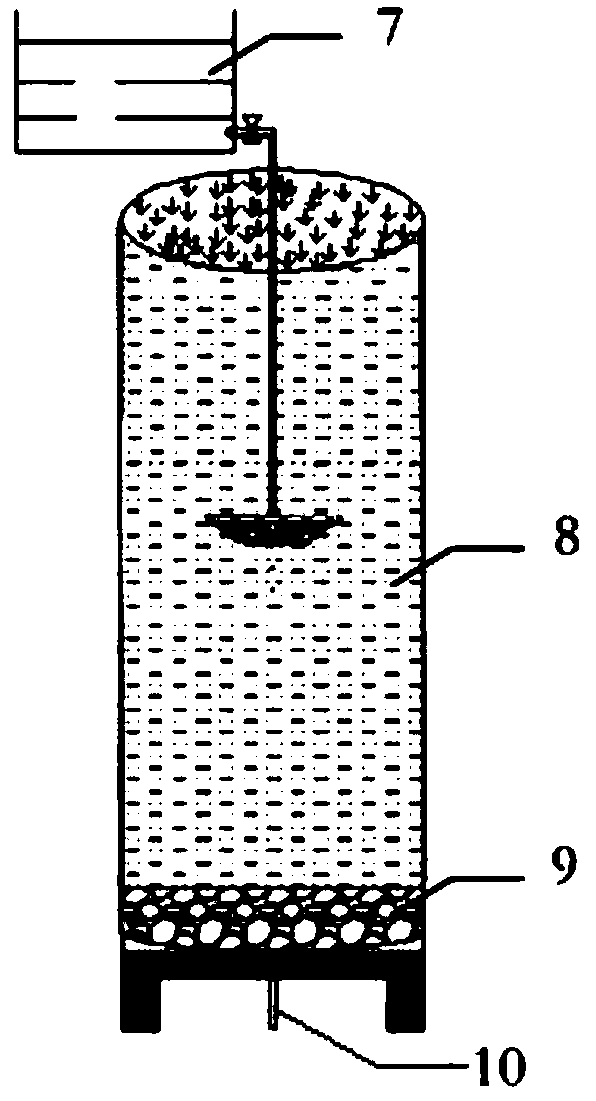In-situ oxidation reduction potential testing device for laboratory simulation underground infiltration system
An in-situ oxidation and testing device technology, applied in measuring devices, material analysis through electromagnetic means, instruments, etc., can solve the problems of complicated monitoring methods, shortened water quality life, and original activity damage of environmental soil, etc., to achieve automatic processing , The equipment occupies a small area and is convenient for analysis and research.
- Summary
- Abstract
- Description
- Claims
- Application Information
AI Technical Summary
Problems solved by technology
Method used
Image
Examples
Embodiment 1
[0027] In order to solve the problems existing in the existing technology, such as figure 1 and figure 2 As shown, the present invention provides a kind of in-situ oxidation-reduction potential testing device of indoor simulated underground infiltration system, comprising 6 underground infiltration system sewage treatment devices and a multi-channel ORP real-time monitoring system, and the underground infiltration system sewage treatment device comprises The column height of the experimental column 2 and the experimental column 2 is 130cm, the water distribution pipe 1 and the water outlet pipe 10, the experimental column 2 is filled with a mixed matrix 8, the outlet pipe 10 is set at the bottom of the experimental column 2, and the water distribution pipe 1 is set at the top of the experimental column 2 , the lower end of the water distribution pipe 1 extends into the experimental column 2, the upper end of the water distribution pipe 1 is externally connected with a water t...
Embodiment 2
[0039]An in-situ oxidation-reduction potential testing device for indoor simulating underground infiltration system, other features are the same as in Example 1, the difference is that another height of experimental column 2 and mixed matrix 8 are disclosed in this example, the experimental The column height of the column 2 is 150 cm, and the mixed matrix 8 contains the following components in parts by mass: 70% meadow brown loam, 20% cinder and 10% sand.
[0040] Among them, the organic matter content of the meadow brown loam soil is 18-20wt%. The method for obtaining it is to dig out the surface layer at a depth of 0-20cm, then spread it out and air-dry it, crush it, and remove stones, plant residues and other sundries.
[0041] The particle size of the sand is 1.6-2.0mm, and the method of obtaining it is to use a sieve with an aperture of 1.6mm to sieve the sand, take the upper part, and then continue to sieve with a sieve with an aperture of 2.0mm to obtain the lower part. ...
Embodiment 3
[0045] An in-situ oxidation-reduction potential testing device for indoor simulating underground infiltration system, other features are the same as in Example 1, the difference is that another height of experimental column 2 and mixed matrix 8 are disclosed in this example, the experimental The column height of the column 2 is 180 cm, and the mixed matrix 8 contains the following components in parts by mass: 70% meadow brown loam, 20% cinder and 10% sand.
[0046] Among them, the organic matter content of the meadow brown loam soil is 18-20wt%. The method for obtaining it is to dig out the surface layer at a depth of 0-20cm, then spread it out and air-dry it, crush it, and remove stones, plant residues and other sundries.
[0047] The particle size of the sand is 0.8-1.0mm, and the method of obtaining it is to use a sieve with an aperture of 0.8mm to sieve the sand, take the upper part, and then continue to sieve with a sieve with an aperture of 1.0mm to obtain the lower part....
PUM
| Property | Measurement | Unit |
|---|---|---|
| particle diameter | aaaaa | aaaaa |
| particle diameter | aaaaa | aaaaa |
| particle diameter | aaaaa | aaaaa |
Abstract
Description
Claims
Application Information
 Login to View More
Login to View More - R&D
- Intellectual Property
- Life Sciences
- Materials
- Tech Scout
- Unparalleled Data Quality
- Higher Quality Content
- 60% Fewer Hallucinations
Browse by: Latest US Patents, China's latest patents, Technical Efficacy Thesaurus, Application Domain, Technology Topic, Popular Technical Reports.
© 2025 PatSnap. All rights reserved.Legal|Privacy policy|Modern Slavery Act Transparency Statement|Sitemap|About US| Contact US: help@patsnap.com


